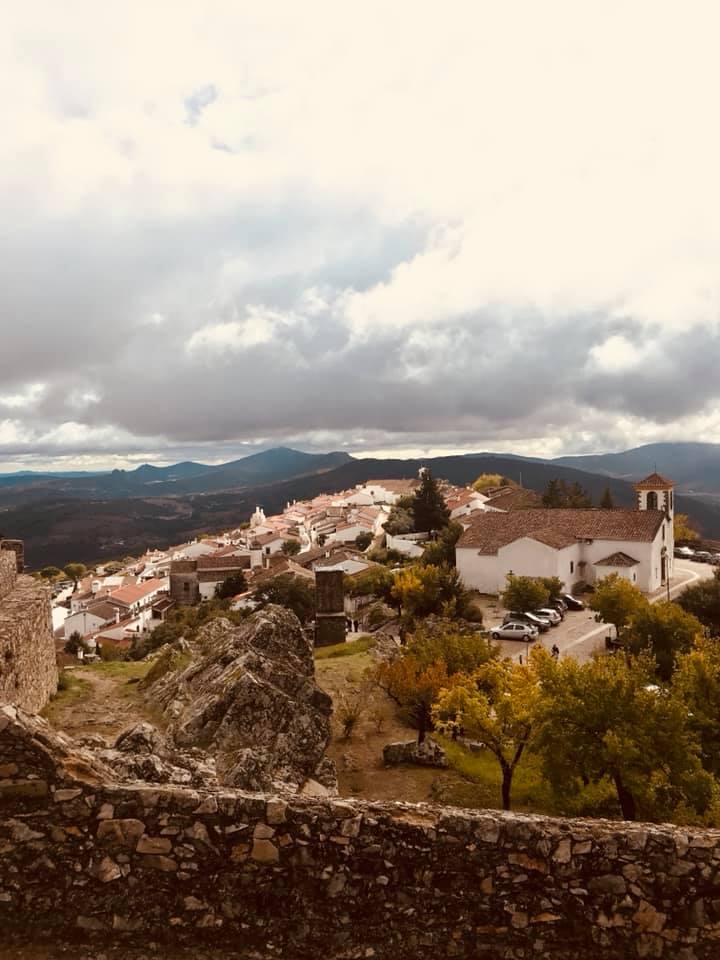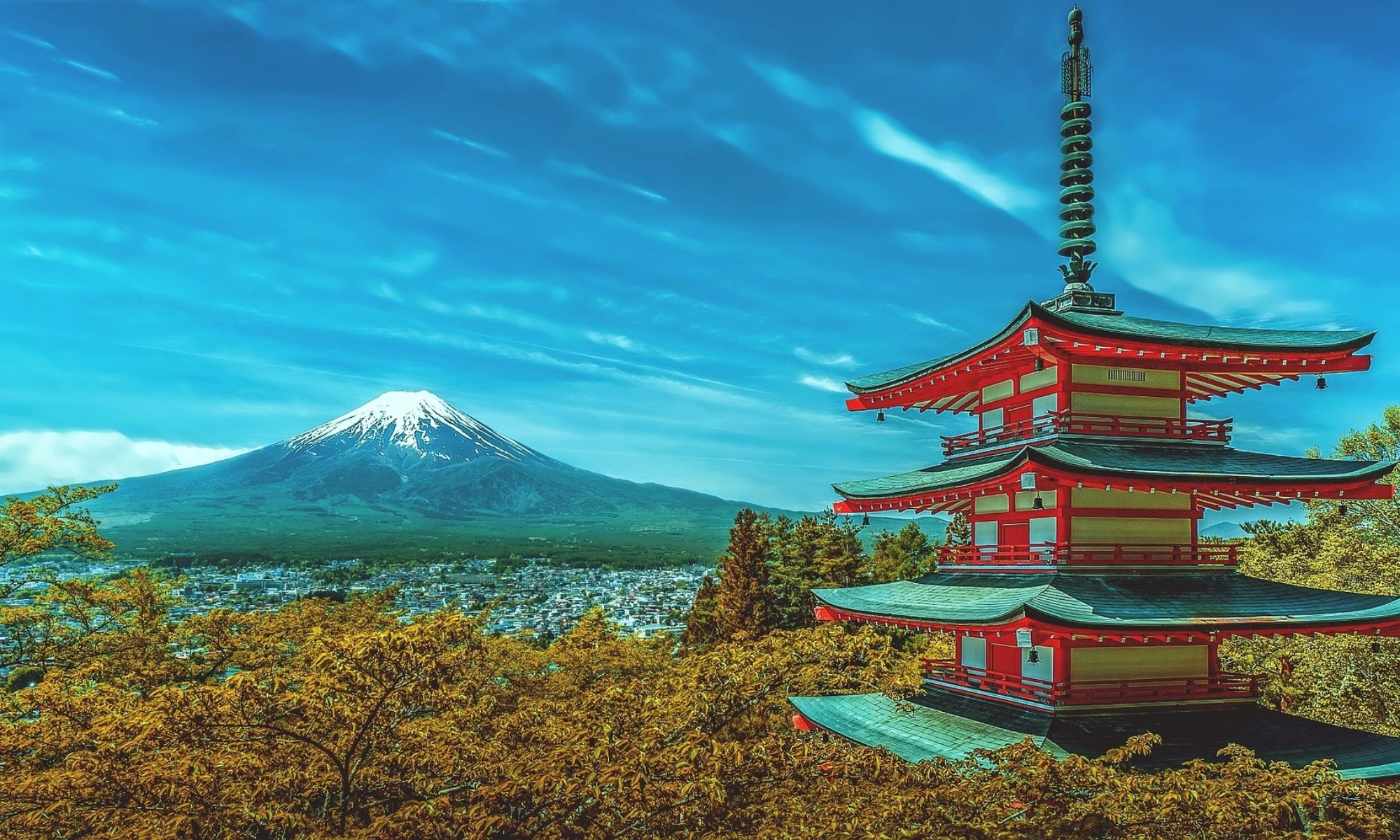Hidden Gem on the Spanish/Portuguese Border
The house we’re staying in is about three kilometers from the Portuguese border, and the first time we were on elevated ground, and we looked to the west, the town of Marvao was impossible to oversee. Approximately seven kilometers over the border, this town with castle sits atop a larger, steeper hill in a position so…remote it made the town all but unconquerable in the Middle Ages; it’s remoteness lending it a heavenly, hypnotic quality. The moment we saw it perched high on its mountaintop my wife and I said, „We have to go there!“
It should be mentioned that the town was named in the 2003 bestseller, 1,000 Places to See Before You Die, and there’s good reason for it.
To arrive there, one must find the pretty but minuscule Portuguese town of Portagem, where a narrow but well-paved road snakes its way up the hill. It’s advisable to park outside the town, under its imposing walls, as driving through the crooked, uneven, super-narrow cobblestone streets is a job best left to the pros. An even better solution is to take the bus up from Portagem–the roads are tricky and stressful so let the driving be done by someone else. The buses are comfy and only cost about one euro and fifty cents roundtrip.
On quiet days, which is like, always almost, it’s great to visit the town and just discover at your own pace. The shops, offering a wide range of local goodies from handmade cork accessories: purses, hats, shoes, and bottles of liquor wrapped in cork (Yes, you read that right: cork is huge here.), to seemingly hundreds of products made with chestnuts: cookies, beer (yum yum!), chestnut preserves and spreads; even the aforementioned liquor was a kind of chestnut schnapps. Everything we tried was worth trying. Especially the beer.
One thing you must do on a quiet day, however, is visit the castle, if only for its amazing views. The hill is, as said, very steep on all four sides, affording a view for hundreds of kilometers on a clear day. It’s easy to see why Marvao was not easy to conquer, standing atop the battlements. Just getting an army up the side of the hill must have been a stupendous accomplishment.
We were there on a quiet day, and we spent it checking out every nook and cranny of he place, from the „outhouse“ behind the reception center to the cistern, where the castle’s water could be stored for up to six months, and where we tested our gothic singing voices (what a sound!), to the granary, to the battlements at the far western, highest end of the fort. A truly beautiful castle, but maybe the weather influenced our judgement–the sun always seems to shine on Marvao.

We also had the good luck to be in the area for the „Chestnut Festival,“ an exciting ethnic fest revolving around chestnuts–they’re big here, by the way, and we made sure to be in Marvao for that.
One has no choice but to take one of the aforementioned buses up to the town from Portagem–the roads are only open to buses during the festival. Yay! No parking or traffic worries! Once „topside,“ most of the action runs alongside the northern side oft the town’s Medieval wall, but all of the shops and restaurants are open and offer their wonderful array of chestnut and cork goodies.
There is one „huge“ tent around which much of the festival revolves, and a commercial building across the cobblestone street where dozens of delicious chestnut cakes are sold, and above which good wine–chestnut or not–is served. If you like chestnuts you’ve landed in seventh heaven, and, if not, shame!!
Under the tent ethnic music throbs at ear splitting levels, despite the abscence of loudspeakers and, like, electricity in general, and especially when it’s the drummers‘ turns to play :
Dancers wearing paper-maché big heads twirl dervishlike up on the stage and, as the day progresses, the „vibe“ tends to „loosen“, especially once enough chestnut beer and schnapps has been drained. Many people are in costumes that range from the weird to the ethnically chill, and just about everyone is helpful and friendly, even to those of us who don’t speak Portuguese and have forgotten most of their Spanish. Which hardly anyone speaks, anyway.
Also in the tent are dozens of stands which sell so many kinds of chestnut based goods it’s mind-blowing: chestnut cheese, cookies and cakes, preserves, beer and schnapps of course; even noodles. It’s all very impressive and delicious, and most of the vendors are simple farmers, so the prices are WAY down to earth.

For me the best part of the Festival, though, was right outside the tent in a smallish open area surrounded by stands preparing and selling roasted chestnuts–for a dollar a bag! These Stone Age prices put me in a good mood, but the music soon got me really going. Musicians and dancers „collect“ here, all dolled up in the latest traditional ethnic rage, and begin to perform like no one you’ll see on TV.
They’re not getting paid.
They all do it for the fun of it.
Now, do a lot of the outfits and dance steps look a little „tacky“ in our eyes? Maybe so, but to just stand there and munch on toasty chestnuts, and to watch the uncontainable joy of dancers and musicians alike makes the whole trip worthwhile.
These festivals, and these dances, are their fitness program (and, as a fitness trainer, I can attest that they’ll give you quite a workout!), their disco, and a relationship building experience for teenagers who have never been in love, husbands and wives who need the dance to escape the boredom and dreariness of everyday married life, and fathers/ daughters/mothers/sons who just want to enjoy each other’s company. The youngest dancers were maybe ten, the oldest maybe sixty-five, but everyone was nimble on their feet, and deeply happy. Most were probably poor, but none looked it when they danced. In the energy of their dancing one sees real wealth, and, in the joy on their faces: gold.
At the end of the day we stopped in our now favorite Marvaoan (?) watering hole–the one with the parrot next to the bar–and drank ourselves a VERY respectable IPA or three that were brewed right there in Marvao. The lively richness of this fruity, wonderful beer serves to underline and italicize in trendy fonts the extraordinary uniqueness of this special place.
I know it’s remote; not many travellers manage to get on out that way, but I know where I’m going the next time I’m on the Iberian peninsula: MARV- WOW!
